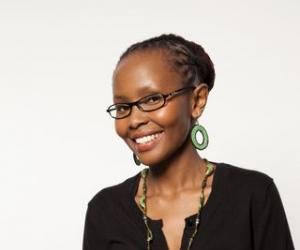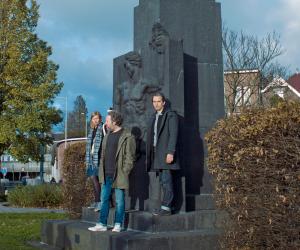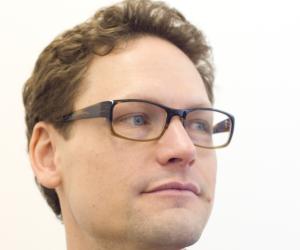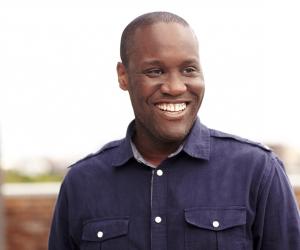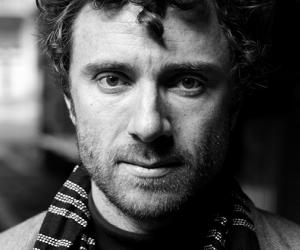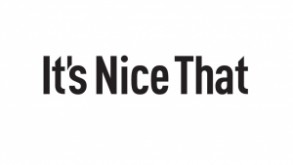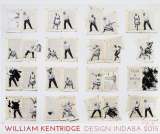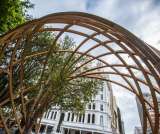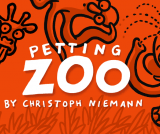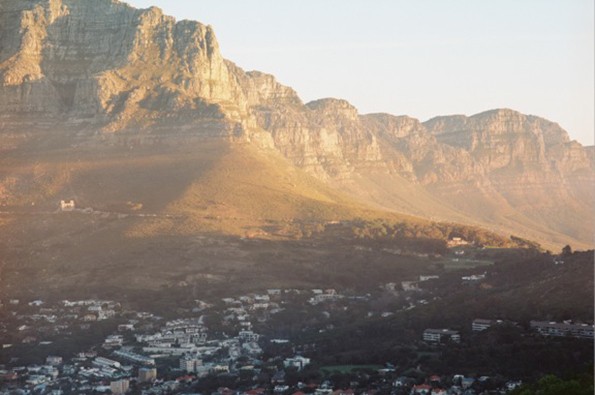
Hello from Cape Town! Design Indaba kicks off today and Editor-in-Chief Rob Alderson is there to capture the wit and wisdom, insights, inspiration and intelligence. There’s a stellar line-up coming over the next three days including Stefan Sagmeister, Thomas Heatherwick and David Goldblatt who’ll be taking the stage at the southern hemisphere’s biggest design event.
3:50pm
The last speaker was British architect Thomas Heatherwick and his presentation rounded off the day in style. Taking some of his most well-known work – The London 2012 Olympic Cauldron, the redesign of the Routemaster, the Shanghai Expo pavilion – he shared some brilliantly personal insights into the design thinking which went into them.
So for the cauldron research told him that “people remembered moments not objects” and so he wondered "Is there a way to make the way something’s lit be “the it.” The brief was that the cauldron should have no moving parts and it was meant to be on the roof but he did things differently.
A lot of his design philosophy is about getting away from the suppositions that come into play for infrastructure design or university accommodation. “Our passion in the studio is public…a lot of our projects we are trying to re-find the human scale,” he said. That lies behind his amazing new Garden Bridge planned for London. He also unveiled jaw-dropping plans for a new art museum in a disused grain silo on the Cape Town waterfront.
3:00pm
Tom Hulme from IDEO’s talk was actually two, interconnected lectures. The first explored digital as another design tool, that shouldn’t distract from the solving of a real human need which remains at the heart of the challenges facing designers. He explained that problem-solving must be in a low friction way but admitted: “Sometimes we over-invest to surprise. That’s the emotional part of the brand.” The democratisation of design tools has changed the role for designers he argued, into people who know how to pose the right questions in the right way.
The second part of his talk espoused the values of open design and the amazing results that collaboration can have. The videos below which he showed introduce the Open IDEO initiative, and gives an example of the terrific things that can come out of working in this way.
1.50pm
Another great talk from Wolff Olins’ Ije Nwokorie who gave a masterclass in how to think and talk about branding. “It’s not our job to make heroes of ourselves,” he told the conference, “we should be hackers, makers, collaborators, instigators…” A brand that is created in collaboration with thousands of people, he pointed out, is by definition going to be stronger.
Ije also made some good points about design in an African context. “In Africa creativity isn’t an option,” he said. “We are used to designing around the system.” He used Little Sun as the perfect example of where design thinking and problem solving come together with excellent results.
12:15pm
Amazing talk from media designer Jake Barton of New York studio Local Projects His core belief is that interaction design should be used to amplify experiences rather than creating new ones. So whether it’s a facial recognition system that finds artworks in a gallery that look the same (see video below) or teaching kids about physics with a programme that measures how quickly they go down slides, Jake and his team take ideas and turn them into interfaces.
He stressed the central role prototyping and testing plays in his studio’s process, rejecting the idea that feedback can “water down the designer’s vision” – in fact he wants people who hate gadgets to show him how real people will respond. All this has informed his work on the 9/11 Memorial Museum due to open in the summer.
10:30am
Amsterdam-based graphic design studio Experimental Jetset ran through “An Alphabet of Influences,” giving us a fascinating insight into how they think about design and creativity. It ranged from Wim Crouwel to The White Album, the Flemish visual poem Boem Paukeslag to Stanley Kubrick – “we share a neurotic desire to control even the smallest elements in our work.”
They were particularly interesting on the identity they did for the Whitney Museum built around a responsive “w.” Because they were asked to come up with the graphic language and the museum’s in-house team would implement it, they were drawn to the idea of design as instruction, inspired by the art as instruction pioneered by the likes of Sol LeWitt.
They ended on the question of why they do what they do: “The world is basically on fire…here we are scavenging the ruins of modernism hoping we might come across something valuable that changes the way people think.”
08:55am
Kenyan Juliana Rotich founded Ushahidi, a blogging platform that aims to “leverage technology in the service of citizens.” It has been used by communities after disasters (Japan, Haiti) and around elections and political events (like the current uprisings in Ukraine). She likes the fact it’s so eclectic; it can be used to monitor the democratic process or find the best burger.
“We use function to drive the technology,” she said. This approach helps push the boundary of what is possible and she urged designers to think in this way. It was this that led them to redesign the modem for the specific technological and environmental challenges of the developing world.
08:30am
Chris Gotz of Ogilvy kicked off the day, with an immediate acknowledgment of how the delegates may view his discipline. “Good design has value and purpose and makes the world a better place. Unlike advertising which I do…” He talked with honesty, humility and humour about the challenges of turning round Ogilvy’s creative reputation in South Africa, focussing on the idea that “ok is not ok.”
“We started feeling brave and full of possibility. Possibility fuels your enthusiasm and has this way of killing your fear of the unknown,” he said.
Chris said it’s imperative for creatives to be open to the “accidental poetry” which occurs all around us. “Our ability to pay attention to the world around us is diminishing. We are suffering from a deficit of primary experience; the stuff we look at on the internet has been curated by someone else.” And he insisted you don’t have to be cynical and world-weary to get ahead in the creative world: “You can be naive and innocent and believe in the power of ideas.”


